
|
| Accept Cookies | Customize | Refuse Cookies |
Vittorio73 www.juzaphoto.com/p/Vittorio73  |
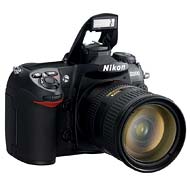 | Nikon D200 Pros: Sensor, old style construction, few Mpx with consequent lightness of the files, perfect for the BN Cons: Images not very detailed, lack of fine calibration of the optics, ISO hold above 1600, but for the current cost ... nothing Opinion: A tank with a CCD that returns delicate images, with soft tonal passages and a natural complexion, although let's forget the detail of sensors with more mpx. On the other hand, not having the fine adjustment of the lenses, you must have luck in the couplings. For what it costs (paid 120 euros in excellent condition and complete with BG and memory card) I recommend it to always carry around without too many worries, especially if you often shoot in BN. sent on December 12, 2022 |
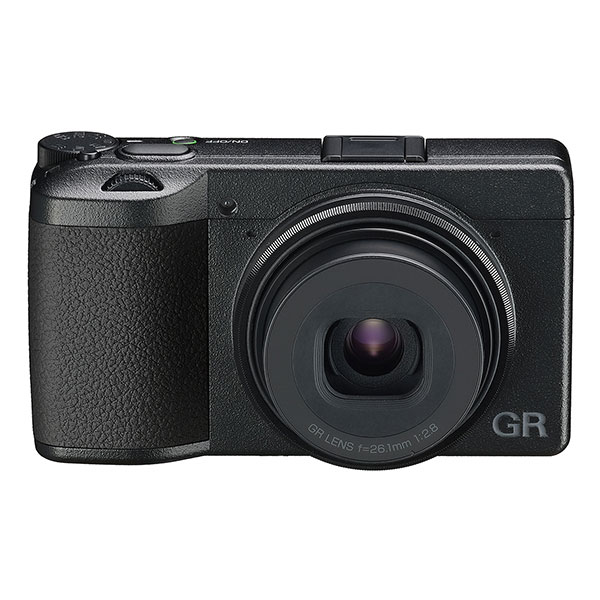 | Ricoh GR IIIx Pros: Ultra-high image quality, 40mm equivalent focal length, stabilized APS-C sensor, compactness, ease of use, excellent autofocus, touch screen, snap focus Cons: Price, battery life, lack of optical viewfinder, built-in flash and charger Opinion: I wanted a compact to always carry with me, and avoid the weights of the FF kit without sacrificing IQ. I already have a great Fuji X100T 16 Mpx, but it is too big to be considered "pocketable". The choice hung between the GRIII, the Sony RX100VA and the Panasonic LX100II. After some tests with the Panasonic and the tiny (and 'dangerously' slippery) Sony, in the end I opted for the GR, despite the fixed focal length that makes it less versatile. Fortunately, the choice was made when this GRIIIx came out, with a focal length of 40mm instead of 28mm, with the possibility of crop to 50mm and 71mm. The image quality is from APS-C of professional level in the body of a compact and, after the necessary tests and comparisons to monitors, certainly higher than that of the other two contenders, especially Panasonic. I don't make videos and shoot only in RAW, and I must say that the files are very clean and very well workable. The cons are known before and they are easily obvied... except for the price. A charger and a small flash for 999 euros of list price could also put them in the box (as in the LX100 which costs 150 euros less)! In any case, I vote... 9.9! sent on October 18, 2021 |
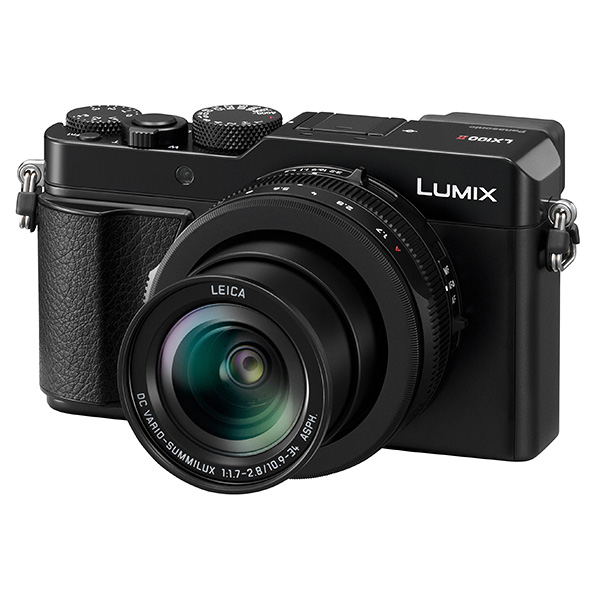 | Panasonic Lumix LX100 II Pros: Fantastic construction, attractive and well-kept aesthetics, bright 24-75 lens, presence of the viewfinder, good AF. Cons: It is not exactly "pocket-sized", the front lens extends too much, sucks dust and dirties the sensor, very slow zoom, disappointing image quality (for me). Opinion: I wanted to take a good compact to accompany my Nikon and Pentax FF kits. The choice was between this, the Sony RX100 VA and the Ricoh GR III. I had a good offer and I took it without thinking about it. Needless to say, it is beautiful and talking about the merits, already known and taken for granted, is superfluous. Let's move on, instead, to the do... notes lenses. The Leica lens is valuable as a construction, it is bright, but it extends a lot already from the focal length 24. I thought that the problem "dust" affected only the first series but it did not solve at all. After a few shots a nice black hair on the sensor! In addition, the zoom moves with a disarming slowness. IQ surprised me in the negative. I shoot only in RAW and the files, once converted and passed to LR, are very grainy (even at 100 ISO) and little engraved. In the end I brought it back to the store and replaced it with the new Ricoh GR IIIx (40mm focal length). No zoom... Ok. No viewfinder... all right. But really pocket-sized and with a 24mpx APS-C sensor that churns out scary files, spotless and engraved. Rating 5 (unfortunately). sent on October 15, 2021 |
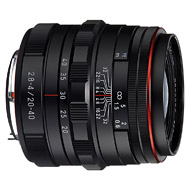 | Pentax HD DA 20-40mm f/2.8-4 ED Limited WR Pros: Construction, WR, good overall yield and sharpness (after calibration), lightness. Cons: Fine AF calibration to do, small lampshed and pressure cap, mounting UV filters trigger abnormal flares and ghosts with point lights, cost. Opinion: It's the standard lens that brought me into the Pentax world. Good yield to open diaphragms, excellent from 5.6 up. It has a skimpy focal range of 30 to 60 mm equivalent, but adequately replaces the entire set 21-35-40. For a complete and quality APS-C kit just add a 15 and a 70 and you're done. The lampshed is small, cute but ineffective, and the pressure cap is nice but you risk losing it. I replaced it all with a larger screw lampshed and clip cap. I had to spend some time calibrating the AF. Finally, in the evening, with point lights even frontal, using UV filters triggers abnormal and annoying Ghost and Flare, absolutely not present without mounted filter. I did accurate tests without filter and with Hoya Pro1 filter (one of the best, so it wasn't a filter issue!), on tripod and in the same shooting conditions. Vote 8 sent on September 11, 2020 |
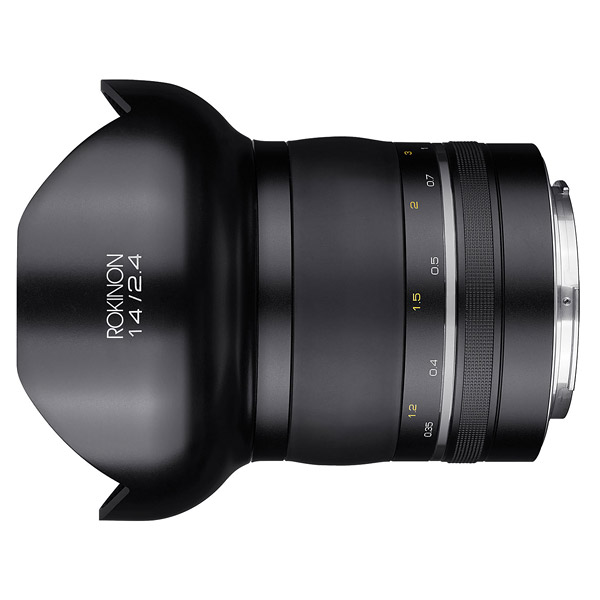 | Samyang Premium 14mm f/2.4 Pros: Sharpness from 2.8 onwards, solid construction, distortion contained compared to the previous version, the fire indefinitely falls right on the stamped notch. Very small coma at the edges. Cons: Lack of tropicalization, weight, price. Opinion: I too have replaced the old version 2.8 with this one and found a marked improvement in image quality. I chose this, compared to the Sigma 14mm Art, because it weighs 1/3 less, costs half and gives average overlapping performance (and edges, perhaps, even better). The sharpness at 2.4 is only discreet, but improves a lot at 2.8 to be perfect from f4 onwards. The distortion is very contained compared to the old version. The flare is contained but still present, but it is normal for this type of lenses with a domed frontal element. The rubber of the focus barrel is constantly filled with dust and you can hardly remove it, but it is a feature that also have the latest Zeiss Milvus (which I am lucky enough to own). Finally, the endless fire falls exactly on the symbol stamped on the barrel (at least on my specimen). Slow still great. I'm recommending it! sent on August 14, 2020 |
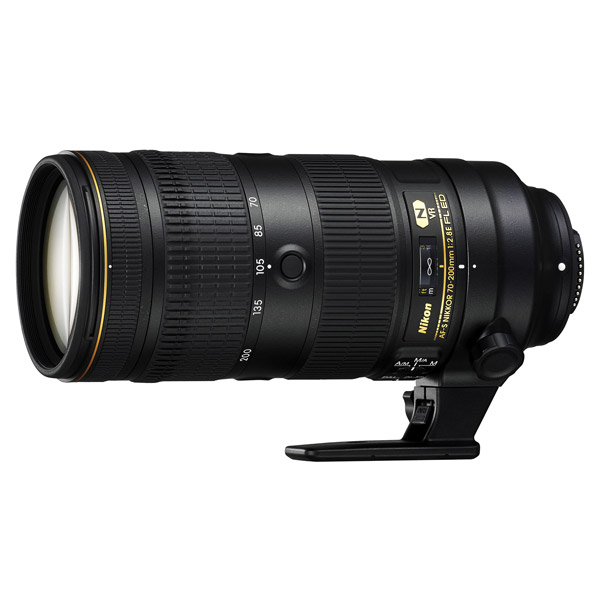 | Nikon AF-S 70-200mm f/2.8E FL ED VR Pros: Sharpness, autofocus speed, bokeh, construction, VR. Cons: Excessively soft ice. Weight, weight, weight... Ah, I forgot... Weight! Opinion: It's my first 70-200 and I have to say it's a fantastic view. Sharp, fast autofocus and creamy fuzzy. The weight from "bilico" is something to which I was not used, but I do not make text (I come, in fact, from a 70-300 VR that weighs less than half and is still a very good goal, also very sharp, albeit dark). I did a three-hour shoot with him today and I came out with my arms slaughtered... however, it gives satisfaction just to hold it in your hands, and with the D3s and the D810 with BG it balances well. The construction is solid (and we would miss it too!). He obviously gives his best with the Big-Mpx. VR keeps its promises and "enters" very quickly. The cost is high, but you know at the start. sent on August 09, 2019 |
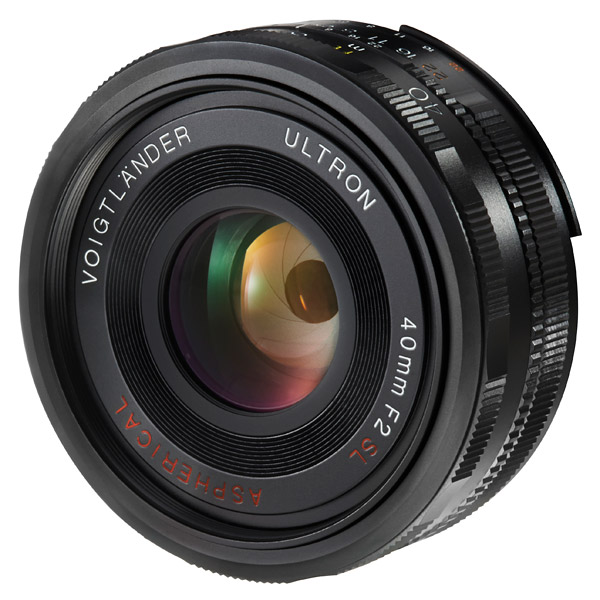 | Voigtlander SL-II Ultron 40mm f/2.0 Pros: Uniform sharpness, micro contrast, construction and jays, lightness. Cons: Undefined series lampshade and yield of sunstars (light points) poorly defined with closed diaphragms. Opinion: A miniature Zeiss at a third of the price. For those who love manual focus the fluidity of the dinghies is pure enjoyment. I added a small 39mm cylindrical lampshade to the standard one solving many side light flare problems. The 9 rounded blades of the diaphragm give a very nice bokeh to open diaphragms but the yield of the sunstars a little confused to closed diaphragms (I would have preferred straight slats). sent on July 07, 2019 |
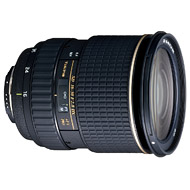 | Tokina AT-X Pro 16-50mm f/2.8 DX Pros: Opening 2.8, Sharpness from f4, starts at 16mm (24mm equivalent si FX), colors. Cons: Construction only seemingly solid... in fact it is very mediocre (see notes), soft at 2.8, purple fringing and chromatic aberrations, absence of stabilization, absence of tropicalization, usual clutch system for the transition from AF to MF... but you know what the Tokina are like. Opinion: Old-fashioned lens, built seemingly like the 28-70mm 2.8 FX (which I had and resold) but which, unlike the older brother, is not internal focus, so the barrel extends telescopicly and the mechanism with time loosens and tends to move (to put it in place, when the zoom is 16mm, the front lens group moves. When you stretch to 50mm and put the lens vertically, with the front lens pointing upwards, the telescopic group tends to lower/close to return to 16mm). Returns only discrete images to f2.8 and sharp from f4, to reach the maximum between f5.6 and f8. Very beautiful colors and good detachment of the floors. For what I paid him (130 euros on the bay)... I could give him 10. Instead, objectively, I vote 5. sent on May 22, 2019 |
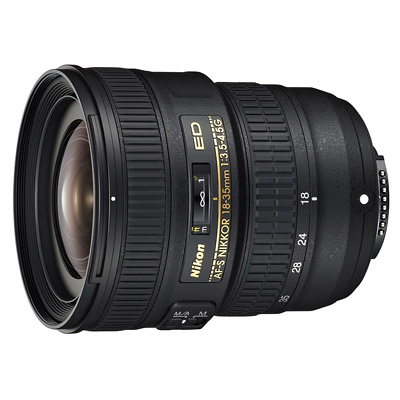 | Nikon AF-S 18-35mm f/3.5-4.5 G ED Pros: Very light, quite sharp (closed a little), versatile, ability to use circular filters, good flare control Cons: Not suitable for night outings and indoor photos (unless you use a tripod), wide angle only 18mm Opinion: Taken used in excellent condition at a great price, and coming from a 16-35, I can say that overall it is a very good goal, quite sharp (more than 16-35) and countered. Well-controlled distortion (also better than the big brother). It's not up to the Tamron 15-30 f2.8... but for light outings, and during the day, that's fine. I find it wrong to list between 18 and 20mm of the very slight distortion on FF, if it is controlled in PP with a click: when you buy it you are already aware of this thing. If on the wide-angle side had dropped to 16mm it would have been perfect! sent on June 22, 2018 |
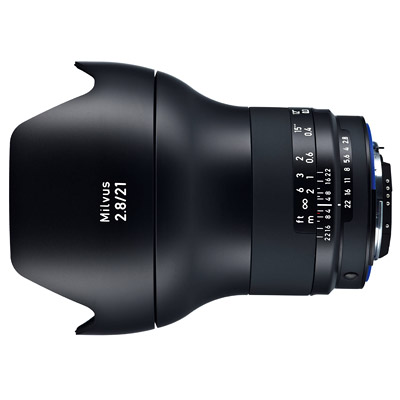 | Zeiss Milvus 21mm f/2.8 Pros: General optical yield, microcontracting and colors. High sharpness in the center already from TA, good on the whole frame from f5.6. Top construction. Cons: SCANDALOSO front cap, TA vignette, high weight and price, does NOT have the infinity perfectly in focus at the end of the ride Opinion: I took this beautiful lens very soon, after being pleasantly impressed by the surrender of the little brother, the Milvus 2/35. The performance is in line with the Distagon series (it does not change the optical design) but I preferred the Milvus for the tropicalization and the more modern design. Manual focus is not a problem for this focal point. On the other hand, it is not made for action photos. I use it for landscapes and thought shots on tripod. For the rest I have the Nikon 20mm 1.8g, which is autofocus and has a similar yield... except for the microcontract. Like my other Milvus (and as written in the House instruction manual) it does NOT have the infinity perfectly in focus at the end of the race... but with wide anglers you almost always work in hyperfocal. sent on March 15, 2018 |
 | Nikon 28mm f/2.8 AI-s Pros: Overall yield, microcontrast and color saturation, excellent sharpness at the center, construction, it behaves very well on low density sensors up to f8 and on very dense sensors up to f5.6. Cons: Edge sharpness acceptable by f4, start diffraction from f8 to d810. Opinion: Used mostly for landscapes and street (in hyperfocal) it was a real surprise. An excellent manual focus and well-built at an honest price. It always behaves excellently, giving back crystalline images and colors saturated and well contrasted. On the 36 mpx of the d810 comes to life. Better yield at f5.6, where the edges are good. On dense sensors it is better not to go further, otherwise start diffractive phenomena (already at f8), with a slight drop in sharpness. Vote 9 sent on December 31, 2017 |
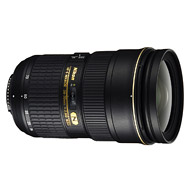 | Nikon AF-S 24-70mm f/2.8 G ED Pros: Sharpness also surprising at TA throughout the frame, pleasantly saturated and contrasted colors, excellent bokeh, metal construction, intrinsic value of the optics. Perfect for 12/16 Mpix sensors. Cons: Weight, encumbrance even with folded hood, apparent fragility despite the construction. Opinion: I'm always extremely critical and bad in judgments, but this time I applaud Nikon. Taken used at a great price giving away my very disappointing 16-35 f4 (what is ridiculous as yield and construction for what it costs). Just mounted on D3s and D700 .... WOW !!! Great sharpness even at the edges at TA. On the 12 Mpix is ??a view of a higher level. I do not know how to behave with the most dense and modern sensors. Some say that about 36 and more Mpix is ??not great ... I do not doubt, but should not be unbalanced with stupid statements to those who, despite having Pro lenses, remain enthusiastic about this lens. Given the brightness and focal lengths, the lack of stabilization is not felt too much. My shopkeeper advised me this instead of the more modern VR, even at the cost of forgetting a much greater gain (textual words: "If you need the VR then take it, in fact, wait for the Tamron G2 or test the Sigma and save a nice little ... but I personally suggest you the old man who, on your car bodies, goes very muchbetter than the new and maybe even the others! ") The weight makes you feel but is well balanced on bodies pro and / or BG.The construction is excellent but, perhaps because influenced by various reviews that signaled its fragility, I the terror of mistreating it.The hood makes it an even more voluminous lens than it is, exasperating its length when mounted and the width when folded.Tried both the Tamron (the G1, but the G2 seems to make it the same, at least in the compartment ' sharpness') that the Sigma (I already have the 24 and 35 ART ... really good!) but they did not convince me, so I highly recommended to those who want to stay in the brand and do not want to risk with third-party goals, even if stabilized and more modern, given that the overall yield is absolutely not less (on the contrary) and that over time maintains a greater value in the used. sent on September 26, 2017 |
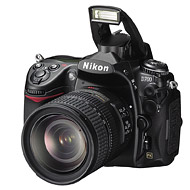 | Nikon D700 Pros: Semi-rigid body (with pro characteristics) robust and reliable, sensor with "right" pixels that digests discrete optics well but which, combined with PRO optics, becomes stratospheric, light files, yield up to 4000 ISO, used price. Cons: Weight, yield after 4000 ISO, single CF slot, excessive shutter noise, non-100% coverage viewfinder, prehistoric LV, tires. Opinion: Perfect machine for those who can do and only want to take pictures. Today Nikon would see well from producing a body with the same characteristics of this, otherwise it would not sell anymore neither the flagships nor the "faulty toys" that it produces now, afflicted by continuous calls and firmware updates. Taken used by an amateur with less than 18,000 shots with BG, has a high yield at high ISO up to 4000, over which the files show a grain too intrusive and an obvious loss of dynamic range. For me its 12 Mpx are more than enough to create beautiful, exciting and full of details (of course ... not as detailed as those of an 810 but that, if you do not "work", only serves to earn your dealer of computers and hard disks). Forgive the shortcomings of some less performing targets, but with objectives for exceptional results. I do not do video, so perfect and immortal machine ... my daughter will have to learn to take pictures of this! I joined a D3s for high ISO (and for the "monkey"). sent on September 25, 2017 |
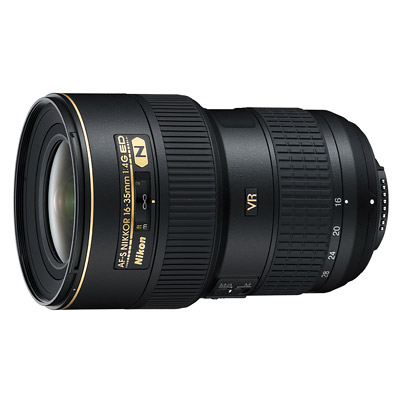 | Nikon AF-S 16-35mm f/4 G ED VR Pros: Weight, comfortable excursion, possibility to use circular filters, good flare resistance, stabilizer Cons: Decay corners up to f8, general softness, ridiculous lampshed. Opinion: I may be very bad, but it was a great disappointment to me. Purchased used at an excellent price and used on the d700 and D3s (which "forgive" a lot to the less performing optics), I resold it after a few months (without losing, fortunately). I thought i'd had a specimen that was a little stressed or failed, but I had it checked out and they told me it was perfectly average... So. People like Ken Rockwell who say this lens is the sharpest of all wide-angle zooms (even more than 14-24) should make their glasses again, and those who are content to shoot from f8 onwards won't necessarily see too many differences with other lenses... but it doesn't take a genius to figure it out! Photozone, which is much more honest in judgments, places it in a price range too high for what it gives, saying that it does "everything" discreetly but without excelling at anything. Sharpness in the discreet center (even closing), at the disastrous edges at all openings (a little better from f8 to f11). Of course, the stabilizer helps bring home the shot... but a shot always and in any case not clear if you do not intervene in post. I am not talking about the "famous" 16mm distortion, because it can be easily solved in PP. Those who buy it at full price, in my opinion, do not make a good investment. For what is valid for me it should cost a maximum of 7/800 € from new (Nital) and not double, as I see written here at the top (and to what is for sale by my trusted shopkeeper). Nikon should definitely update it, because it is a product that, with the features it has on paper and, if done well, could be a 'must have'. If you don't update it, you should take the golden ring off! Vote 4. sent on September 23, 2017 |
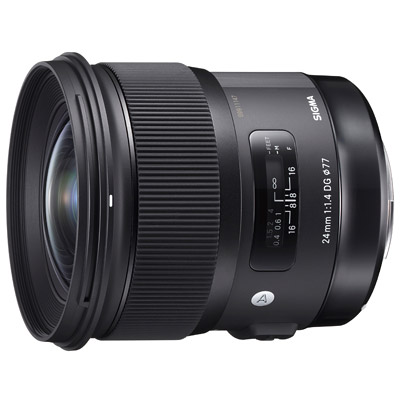 | Sigma 24mm f/1.4 DG HSM Art Pros: Sharpness at the center of TA (though not at the levels of 35 ART that I own), general rendering, construction, bokeh and detachment of the top floors. Cons: A bit soft at TA edges, vignetting up to f2, not tropicalized. Opinion: Focal fix that I missed. For me it's better than my friend's Nikon 24 1.4, tried a whole day and left to lose, especially for the crazy price compared to the quality it offers. rnThis, however, I used it at a price drummed by a photographer who had neither the time nor the desire to calibrate it and wanted to discard it. rnHo used a slot with the Usb Dock and actually suffered from an annoying front focus and an AF somewhat uncertain but, once updated the FW and calibrated .... AF even accurate in low lights and centered / blurry spectacular! As told in TA it's a little soft on the edges and a lot of stickers (all resolved with a couple of clicks in LR). However, the 12MPs of the D700 and D3s are forgiving so much. In the future, if I ever change my body I will never go over the 16 of the D4s .... so ... sent on September 09, 2017 |
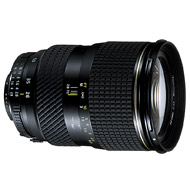 | Tokina AT-X PRO 28-70mm f/2.8 Pros: Sharpness from f5.6 to f11. Granite construction. Pasty colors "old style". AF fairly fast. Nice and gradual Bokeh. Price ... for what it costs is a bargain !!! Cons: A TA is soft, especially on edges, vignette and contrast loses. Flare tendency with strong light sources in the corners of the frame ... Anything, however, quite soluble in PP. MF macho. Optics, for me, does not fit highly pixelated sensors. Opinion: A slow-to-know lens to make the defects become precious. Among the many existing versions I took that PRO I for the Japanese domestic market (it is 2.8 instead of 2.6-2.8 as that for the other markets ... but it is the same goal in all respects) with screwdriver and black paint satin (like that of the photo above), which is said to come from the Ingenieux. For about 300 €, including customs and shipping costs, I took a rugged lens like a tank. The colors, of course, are less contrasted with the new models but for me it is an advantage, especially if it works well in PP.rnThe best one gives it to 28 and 35. AT TA loss of contrast and sharpness is remarkable. From 50 onwards it is best to close at least at f5.6 for greater clarity and avoid vignetting. Not always under control, especially if UV filters are used, but with some attention you remedy. rnIf you do not have a high budget and if you can do without the '24', it's really highly recommended% 21 If you can not live with the flou effect at TA and you want a blade even at 2.8 ... just pay the quadruple for a used 24-70! I switch to the Nikon 24-70 2.8G in the end I did .... and the Nikon is on another planet, especially as sharpness (and whoever says the opposite has never tried the Nikon)! Rn sent on December 13, 2016 |
 JuzaPhoto contains affiliate links from Amazon and Ebay and JuzaPhoto earn a commission in case of purchase through affiliate links.
JuzaPhoto contains affiliate links from Amazon and Ebay and JuzaPhoto earn a commission in case of purchase through affiliate links.May Beauty Be Everywhere Around Me